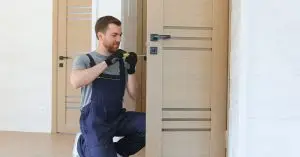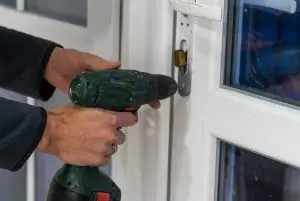Recognizing the Problem Before It Becomes Worse
We all expect our house keys to work smoothly every time we come home. However, when the key won’t turn in the lock, it can create frustration and unnecessary stress. In other words, it catches us off guard when we’re least prepared.
This situation can be caused by several things like dirt in the lock, misaligned doors, or worn-out keys. That is to say, identifying the source early can save us time and damage. Once we know what’s wrong, we can avoid making the problem worse by forcing the key. Therefore, knowing how to respond calmly and practically makes all the difference.
Start with the Simplest Fixes
Firstly, let’s talk about the easiest steps we can take. One of the first things we do is check if the key is inserted all the way. In some cases, it only needs a minor adjustment. However, if the key still doesn’t move, try gently wiggling it while applying light turning pressure.
Sometimes, dirt or debris inside the keyhole is the real issue. In that case, we can use a can of compressed air to blow it out. To clarify, we’re not using lubricant just yet, as certain products might worsen the problem. Above all, patience here is important. For those needing help with house entry, our house lockout Calgary experts are trained for safe, damage-free entry.
When a Worn-Out Key Is the Culprit
Keys that are old, bent, or worn often fail to engage the lock pins properly. Consequently, they won’t turn no matter how many times we try. If we notice scratches, rounded teeth, or warping, then it’s likely the key needs replacing.
We can compare it to a puzzle piece—if the shape is off, it just won’t fit right. Likewise, if the backup key works and the main one doesn’t, that confirms the key is the issue. In this case, we suggest duplicating the backup or contacting a locksmith for a new one. For professional help with key duplication or lock repair, feel free to Contact Us anytime for immediate assistance.
Examining the Lock and Door Alignment
When the key is fine but the lock still won’t turn, the door itself could be to blame. That is to say, pressure or misalignment may cause the internal components of the lock to shift, blocking key rotation. We often notice this when the door seems stiff or rubs against the frame.
In such cases, gently pulling or pushing on the door while turning the key might help. Similarly, locks in older doors might have shifted with seasonal changes. This can cause a misalignment between the bolt and strike plate. Therefore, if the lock turns only when the door is in a specific position, realignment may be needed.
The Role of Internal Lock Failures
Sometimes the problem lies deeper inside the lock. Internal components like springs or pins can wear out over time. In other words, even if the key is perfect and the door is aligned, the lock itself may have failed.
We’ve seen this in older homes or locks exposed to extreme weather. For example, moisture buildup can cause rust, which blocks pin movement. Moreover, forcing a key into a damaged lock might break it, making matters worse. If the lock is not responding despite multiple tests, it’s time to replace or rekey it. To understand all your options, explore how our Calgary locksmith team can help with expert support and lasting solutions.
When to Call for Emergency Help
There are moments when DIY methods simply don’t work. After that point, forcing or tampering with the lock risks more damage. So, calling for emergency locksmith support becomes the safest and quickest solution.
For example, we once responded to a late-night call where the homeowner had tried to remove the cylinder. However, that only caused a complete lock failure and a higher repair cost. To prevent that, we always recommend reaching out before things escalate. You also can read about The Canada’s Best to understand more about what to expect from urgent locksmith visits.
Preventing Future Lock and Key Problems
In conclusion, prevention goes a long way in avoiding lockouts and stressful situations. Regular maintenance like cleaning, using dry lubricants, and checking door alignment can keep things working well. Similarly, avoiding key damage—like using keys to open packages or force drawers—preserves their shape.
We also recommend having spare keys cut from the original rather than duplicates of duplicates. This preserves accuracy and prevents wear-based distortion. Most importantly, if a lock shows resistance, we address it early before it breaks completely. Routine servicing or upgrades to high-quality locks will save us both time and money in the long run.
FAQs
Why won’t my key turn in the lock even though it fits?
This usually means there’s a problem with the lock mechanism, debris inside the cylinder, or a worn-out key. Try cleaning the keyhole and check if a backup key works.
Can cold weather affect how my key works?
Yes, extremely low temperatures can cause metal components in the lock to contract or freeze. Try warming the key slightly or using de-icer.
Should I use WD-40 on a stuck lock?
We don’t recommend it. Oil-based lubricants can attract dust and dirt, which leads to long-term issues. Use graphite powder or dry lubricants instead.
Is it safe to force the key to turn?
No. Forcing the key can break it inside the lock or damage the lock mechanism. It’s better to stop and call a professional.
What should I do if I’m locked out of my house?
If simple tricks don’t work, call a local locksmith immediately. Our team provides quick, damage-free house lockout help in Calgary.





